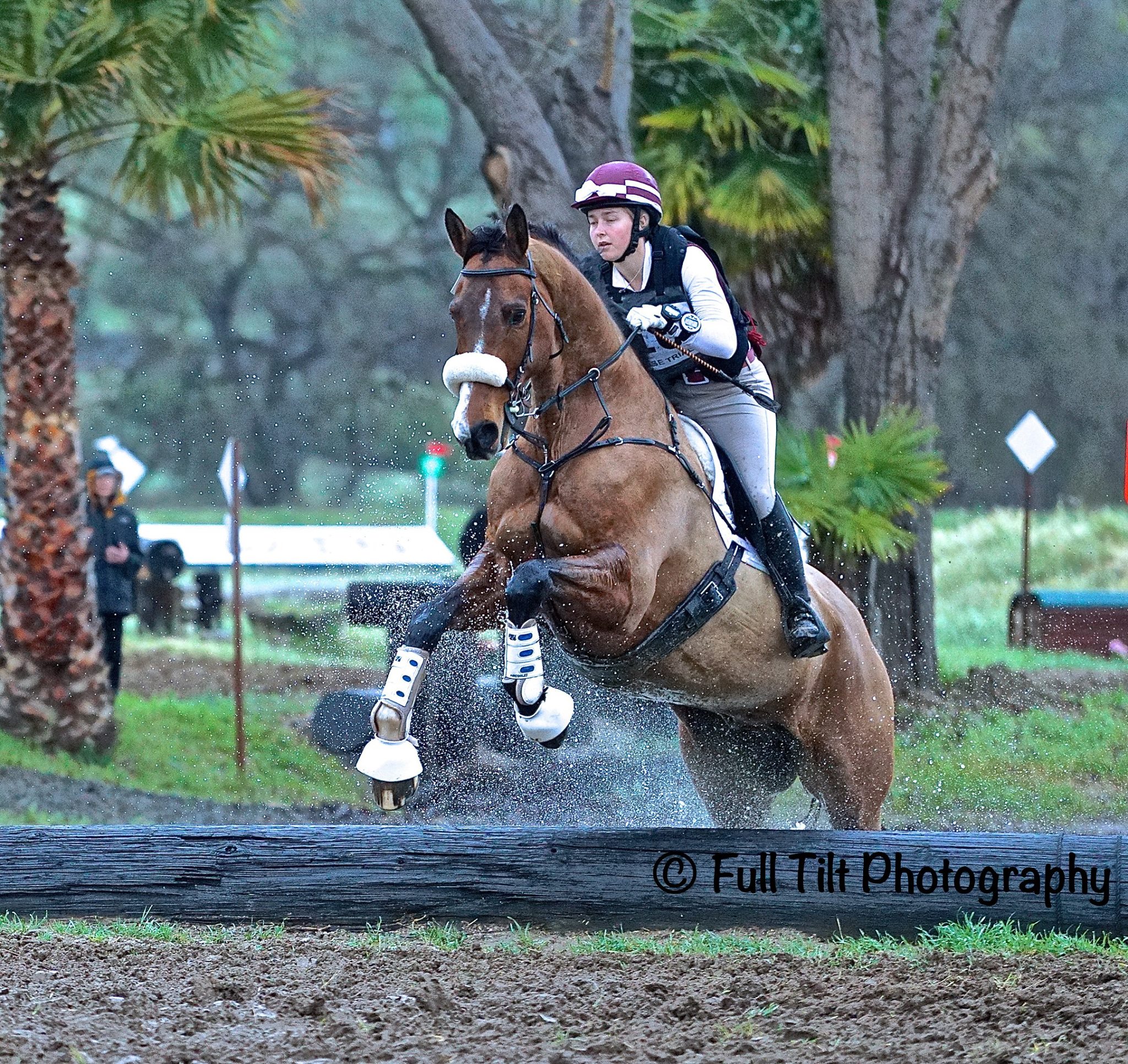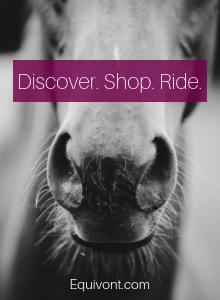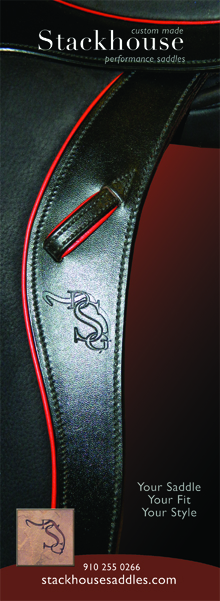Search the Site
The Great Debate - To Look For a Distance or Focus on the Quality of the Canter When Jumping (Current freebie!)

There is a great debate in the Eventing world, almost exclusively in the US... over whether or not riders should "look for a distance" for their horses when coming into their fences. While it is commonplace for Hunter/Jumper riders to do so (and this is where this idea comes from), Event riders need to think a bit differently for one very important reason! Because our cross county jumps are solid, we HAVE to train our horses with the mindset of nurturing their ability to think for themselves.
If we don't nurture the horse's own natural ability to think about his own timing and footwork, he will become markedly LESS SAFE out on cross country. As even the very best of riders get it very wrong on occasion out on course.
The more riders micromanage the horse's footwork and timing coming into jumps when training, the less the horse will be in the habit of doing any thinking about his own footwork.
What this means is when the horse is trained practically to the point of "robot," where every footfall and takeoff spot is controlled and dictated 100% by the rider - the horse will be lost when his rider makes a mistake. Because his natural instincts to look after himself have been squelched in training, they will not be there when he needs them the most. So he will be more likely to not make a good decision... or any decision at all at the takeoff - and therefore is more likely to fall.
Horses have two eyes and a brain of their own, and they don't want to fall down. They can take care of their own footwork and timing just fine... but ONLY if we nurture that ability in training. The rider's job is to create the right canter for each situation, with the right amount of speed and impulsion for the fence in question, to be accurate on the line, and to then maintain the rhythm and balance all of the way to the jump - All of this while staying out of the horse's way enough to let him focus entirely on the jump in front of him.
There should be no doubt that a horse will jump his best when he can focus on each jump without distraction. If the rider has created the right canter, and the horse has been trained to think for himself, the horse will make good decisions when he is allowed to focus on the jump. As the old saying goes, "There is no better master of their own legs than the horse."
Finding and keeping the right canter to each jump should be the priority, as the quality of the canter determines the quality of the jump. And if the quality of the canter is truly there, the horse can handle just about any reasonable takeoff spot smoothly and with ease. The only time that a less than perfect take off spot cannot be handled by the horse that approaches with a great canter, is if that fence is at the extreme far end of the range of the horse's scope. And in my opinion, we should never be putting any horse in the situation where they have to be perfect to avoid a crash.
If your horse doesn't have the scope to jump Advanced level jumps easily with a margin for error, don't take him to that level. If he is maxxed out at 4 feet, then let him stay at Preliminary, where he will then have a nice cushion for safety.
When riders actively "look for a distance", they are using their eyes and sense of timing to try to GUESS when the horse will be taking off. Then they try to fix any less than perfect distance in the last few strides on the approach by either trying to shorten the stride, or kicking the horse onto a longer one. Very often this is done frantically and at the last second, and is quite upsetting to the horse. But even when done fairly smoothly, it almost always changes the canter balance - and not for the better. Those who create the right canter, and ride the rhythm and quality of the canter to the fence will find that the perfect distance almost always presents itself almost "magically" with very little rider eye involved. And again, if the timing is a little off, he can cope on his own just fine.
I always think it is funny when people say, "The horse didn't get to walk the course. He doesn't know what is coming. Therefore I have to pick his takeoff spots for him." Because you have walked the course and have evaluated all the challenges you will be facing, and your horse is not privy to this information ahead of time - YOU are in charge of knowing exactly what type of canter you need for each jump or complex, and precisely when to change that canter on the approach. YOU are in charge of the line, the speed, the stride length, the impulsion level, and the balance of that canter.
The rider is not "doing nothing" or "letting the horse figure it all out." The rider is completely responsible for setting the horse up for success at each fence. And once they have done that, they can then allow the horse to do their job without micromanaging. The only thing the rider is leaving up to the horse (besides the actual jumping) is his own footwork right in front of the jump. And after all, they are HIS feet. I can only imagine how many more mistakes human hurdlers would make, if they had someone else trying to control their feet as they went to jump.
Riders that are taught that "finding the distance is everything" spend much of their jumping practice time developing their "eye." And funnily enough, the riders that focus so hard on finding a distance are almost always the ones who are jumping ahead, and/or ahead of the motion in the air. Again, because they are trying to guess when their horse is going to leave the ground, and tend to throw their bodies over the fence when they think that will happen - rather than actually waiting until the horse is actually leaving the ground, and letting the horse's jumping motion naturally close their angles.
When I have a student who comes to me after riding with someone who makes them try to see their distance on every fence, I find that they are usually quite apprehensive about jumping. They are often frustrated, and feeling like they just don't have the talent to do this sport. They pretty quickly find that creating the right canter, and then riding the rhythm all the way to the base creates a situation where the perfect "distance" and jump just develops naturally. And this gives them enormous confidence.
Exercises like the Adjustability exercise are still extremely valuable, and should be practiced often. Yes, you will also develop an "eye" with exercises like this. But to me, being able to put a nice 5 strides in between 2 poles on the ground, and then to be able to do that line also in 4, 6, or even 7 strides is more of a test of whether you can quickly, smoothly, and easily change your canter stride.
The more rideable and adjustable your horse is, the more smooth and effortless your show jumping rounds will be. And the faster you will be on cross country! Since those who can wait until they are about 6 strides out on the approach to change from a gallop to a coffin type canter will be much faster than those who have to start wrestling with their horse much further back.
The type of canter that you produce will dictate the distance that develops. A long, strung out stride, or an increasing stride on the approach will get you to that awkward spot, where they have to launch from a Superman long spot or chip in. Whereas a bouncy and active canter is your best bet if you want to find that sweet spot, with your horse coming forward to the base.
And in no way is this the same as "looking for a distance," as some people seem to think. As there is no eye involved at all. You just have to know exactly what qualities you want in your canter, and be able to create and maintain them.
The bottom line is that good jumping really is all about the canter! For every situation where you think you see a bad jump caused by a "bad spot," I will show you what quality was missing from that canter to make that bad jump happen. Get that canter right, and keep every single quality of that canter right to the base of your fences, and jumping becomes surprisingly easy!






